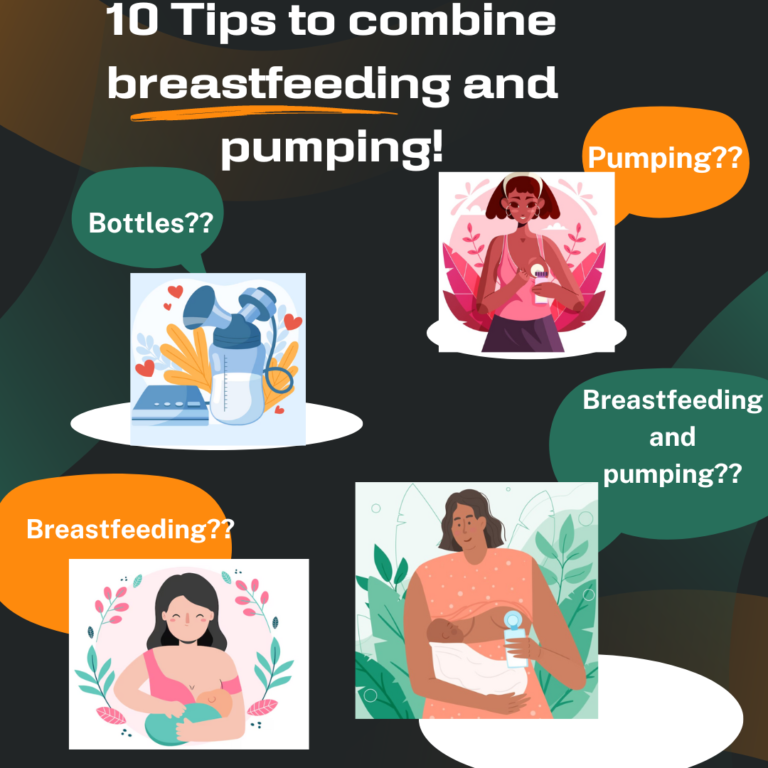Demystifying D-MER in Breastfeeding: Insights for Breastfeeding Moms

Breastfeeding is a beautiful yet complex journey that brings both joy and challenges to new mothers. One of the lesser-known challenges is Dysphoric Milk Ejection Reflex (D-MER), a phenomenon that can cast a shadow on the breastfeeding experience. In this article, we’ll explore D-MER in depth, shedding light on its symptoms, underlying causes, differentiation from postpartum depression, diagnosis, management, and the significance of seeking professional assistance.
What is Dysphoric Milk Ejection Reflex?
Dysphoric Milk Ejection Reflex (D-MER) is a peculiar physiological response experienced by some breastfeeding mothers. Unlike the expected feelings of happiness, D-MER leads to sudden and intense negative emotions, such as anxiety and sadness, specifically occurring during milk letdown.
What are the symptoms of D-MER?
The symptoms of Dysphoric Milk Ejection Reflex can be distressing for breastfeeding mothers. These emotions typically arise suddenly and intensely, occurring specifically during the letdown phase of breastfeeding. Common symptoms include:
- Sudden Sadness: An overwhelming feeling of sadness that can be accompanied by tearfulness and a sense of melancholy.
- Anxiety: Intense feelings of anxiousness, restlessness, or a sense of unease that coincide with milk release.
- Irritability: Heightened irritability, often leading to frustration and a sense of being on edge.
- Hopelessness: A fleeting feeling of hopelessness or despair during milk ejection.
- Dread or Panic: A sense of dread or panic that arises abruptly and subsides as the milk release phase passes.
What causes D-MER? How long does D-MER last?
The exact cause of D-MER during breastfeeding is not fully understood, but it’s believed to be related to the hormonal changes that occur during milk ejection. Specifically, a drop in dopamine levels before milk release is thought to trigger the negative emotions experienced by mothers with D-MER. The release of dopamine is associated with mood regulation, so this hormonal shift could explain the sudden onset of negative feelings.
In terms of duration, it can vary widely among individuals. Some mothers experience these emotions for just a few moments during letdown, while for others, they may persist for up to a few minutes. It is typically most intense during the early months of breastfeeding and may gradually diminish over time.
Why does breastfeeding make me feel depressed? Is D-MER a sign of postpartum depression?

It’s important to differentiate between D-MER and postpartum depression (PPD).
- While D-MER causes negative emotions specifically tied to milk ejection, postpartum depression is a more generalized and persistent mood disorder that can affect a mother at any time of day.
- D-MER is not a form of postpartum depression, nor is it a sign that a mother will necessarily develop PPD. The negative emotions experienced during D-MER are transient and directly linked to the hormonal changes during letdown. Postpartum depression, on the other hand, involves a range of symptoms that can include persistent sadness, lack of interest, changes in appetite, and disrupted sleep patterns, among others.
If you’re concerned about the emotional toll of breastfeeding or experiencing symptoms beyond the letdown phase, it’s crucial to consult a healthcare professional. They can help you distinguish between D-MER, postpartum depression, and other potential issues, and provide the appropriate support and guidance tailored to your situation. Remember that seeking medical advice is a proactive step in ensuring your emotional well-being during your breastfeeding journey.
How is D-MER Diagnosed? Does Dysphoric Milk Ejection Go Away?
Diagnosing Dysphoric Milk Ejection Reflex (D-MER) involves recognizing the unique pattern of negative emotions occurring specifically during milk letdown. It’s important to consult a healthcare professional, preferably one knowledgeable about breastfeeding and maternal mental health, for accurate diagnosis. Sharing detailed information about the timing, intensity, and nature of your emotions can aid in the assessment.
While D-MER can be distressing, the good news is that it’s generally a temporary phenomenon. For many mothers, D-MER tends to improve over time, often becoming less intense as breastfeeding continues. Some mothers may find relief as their hormonal fluctuations stabilize and their bodies adapt to breastfeeding.
How is D-MER Different from Postpartum Depression or the “Baby Blues”?
D-MER is distinct from postpartum depression (PPD) and the “baby blues” in terms of timing, triggers, and duration:
- Timing and Triggers: D-MER is triggered specifically by the letdown reflex during breastfeeding, leading to sudden and temporary negative emotions. Postpartum depression, on the other hand, involves a range of mood-related symptoms that are not tied to specific triggers.
- Duration: D-MER symptoms are transient, often lasting only for the duration of milk ejection. Postpartum depression involves persistent feelings of sadness, hopelessness, and other symptoms that last for an extended period.
- “Baby Blues”: The “baby blues” typically encompass mild mood swings and emotional sensitivity that emerge in the first week after childbirth and resolve on their own. D-MER is unrelated to the “baby blues” and presents differently in terms of emotional intensity and triggers.
How is D-MER Managed?
Managing D-MER involves a combination of awareness, coping strategies, and seeking support:
- Awareness: Recognizing that D-MER is a physiological response can be empowering. Knowing that these emotions are tied to hormonal changes during milk ejection can help you contextualize your experiences.
2. Coping Strategies: Engaging in distraction techniques, such as focusing on deep breathing, counting, or listening to calming music during letdown, can help mitigate the intensity of D-MER symptoms.
3. Emotional Support: Connecting with other mothers who have experienced D-MER can offer validation and a sense of solidarity. Online forums and support groups can be valuable resources.
How Do I Take Care of Myself at Home?
Taking care of yourself is crucial during the breastfeeding journey, especially if you’re dealing with D-MER:
Rest: Prioritize sleep and rest whenever possible to help stabilize your mood.
Hydration and Nutrition: Staying hydrated and maintaining a balanced diet can positively impact your overall well-being.
Self-Compassion: Be kind to yourself. Understand that D-MER is a physiological response and doesn’t reflect your abilities as a mother.
Seeking Help: If D-MER becomes overwhelming or if you’re experiencing persistent feelings of sadness, it’s essential to reach out to a healthcare professional who specializes in maternal mental health.
Remember, every breastfeeding journey is unique, and seeking guidance from healthcare providers and mental health professionals can offer personalized strategies to manage D-MER effectively while prioritizing your emotional well-being.
Conclusion
Dysphoric Milk Ejection Reflex (D-MER) is a nuanced aspect of breastfeeding that brings unexpected emotional challenges to some mothers. As we’ve explored, D-MER triggers sudden negative feelings during milk letdown, setting it apart from postpartum depression and the “baby blues.”
Understanding D-MER’s symptoms, causes, and differentiation is key. While its exact cause remains a puzzle, acknowledging its transient nature and hormonal triggers empowers mothers to navigate this experience with clarity.
References
- Heise, A.M., Wiessinger, D. Dysphoric milk ejection reflex: A case report. Int Breastfeed J 6, 6 (2011). https://doi.org/10.1186/1746-4358-6-6
- Ghaedrahmati M, Kazemi A, Kheirabadi G, Ebrahimi A, Bahrami M. Postpartum depression risk factors: A narrative review. J Educ Health Promot. 2017 Aug 9;6:60. doi: 10.4103/jehp.jehp_9_16. PMID: 28852652; PMCID: PMC5561681.
- Heise AM, Wiessinger D. Dysphoric milk ejection reflex: A case report. Int Breastfeed J. 2011 Jun 6;6(1):6. doi: 10.1186/1746-4358-6-6. PMID: 21645333; PMCID: PMC3126760.
- Centers for Disease Control and Prevention (2020). Breastfeeding. https://www.cdc.gov/nutrition/infantandtoddlernutrition/breastfeeding/mer (accessed October 5, 2021).
- Section on Breastfeeding. Breastfeeding and the use of human milk. Pediatrics. 2012 Mar;129(3):e827-41. doi: 10.1542/peds.2011-3552. Epub 2012 Feb 27. PMID: 22371471.
Note: This article is intended for educational purposes only. If you believe you’re experiencing D-MER, it’s highly recommended to consult a healthcare professional for accurate diagnosis and guidance tailored to your specific situation. Your healthcare provider can offer appropriate interventions and support based on your individual needs.















+ There are no comments
Add yours